Elephants are intelligent, emotional and like humans, they have a personal space that they do not like being invaded. They appreciate silence, patience and slow, consistent movements. It is important to read their body language and let common sense prevail when in their presence.
Although there are many more, we’ve highlighted seven classic elephant behaviours:
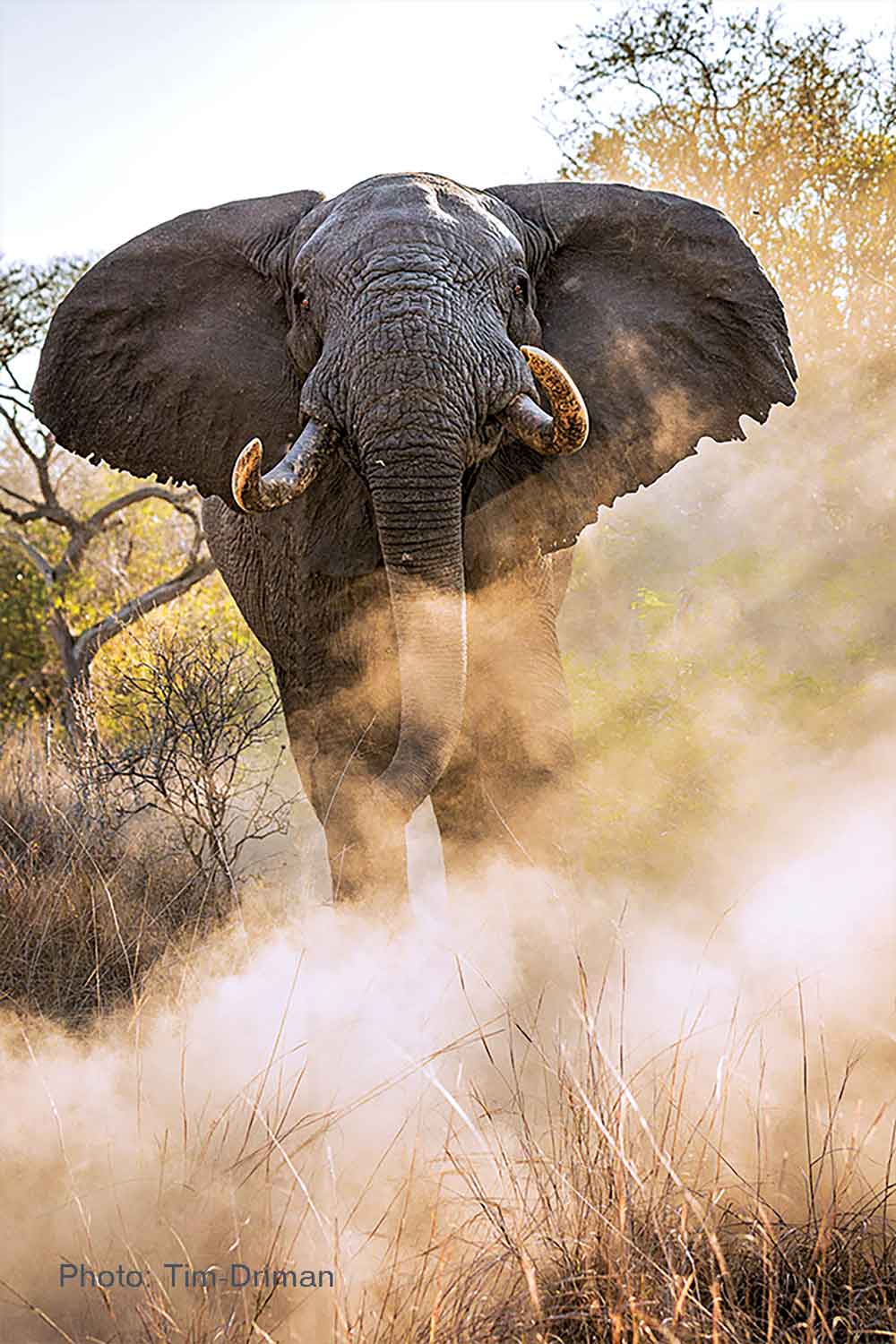
Standing Tall (threat behaviour)
Elephants normally stand or move about with eyes cast down. A direct gaze with eyes open is a component of many displays. A typical posture used mainly by females in challenging non-elephant threats, such as predators and people, would be standing or moving with the head held well above the shoulders, the chin raised ( as opposed to tucked in) and looking down at her adversary over her tusks with an eyes-open-stare and ears maximally forward. The animal appears to increase in height and sometimes deliberately stand upon and object such as a log or anthill in order to increase its height. The elephant means: I’ve got you in my sights, so watch it!
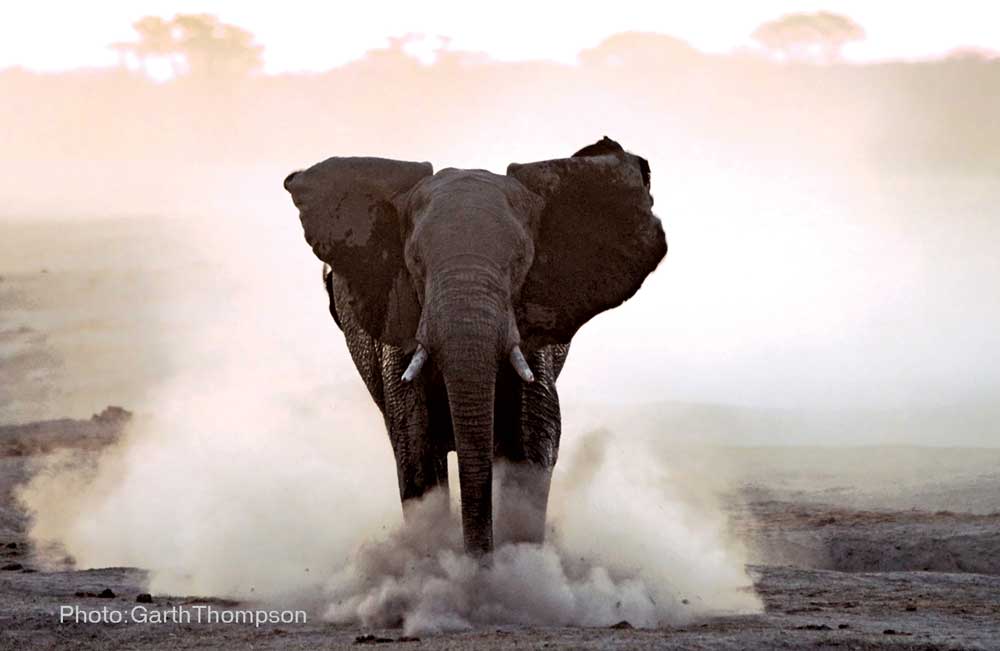
Mock-Charge (threat behaviour)
Rushing towards an adversary or predator, full stature (standing tall). And with ear spreading but stopping short of its target. An elephant may forward-trunk-swing or aggressively kick dust as it abruptly stops. A mock charge is often associated with a shrill trumpet blast.
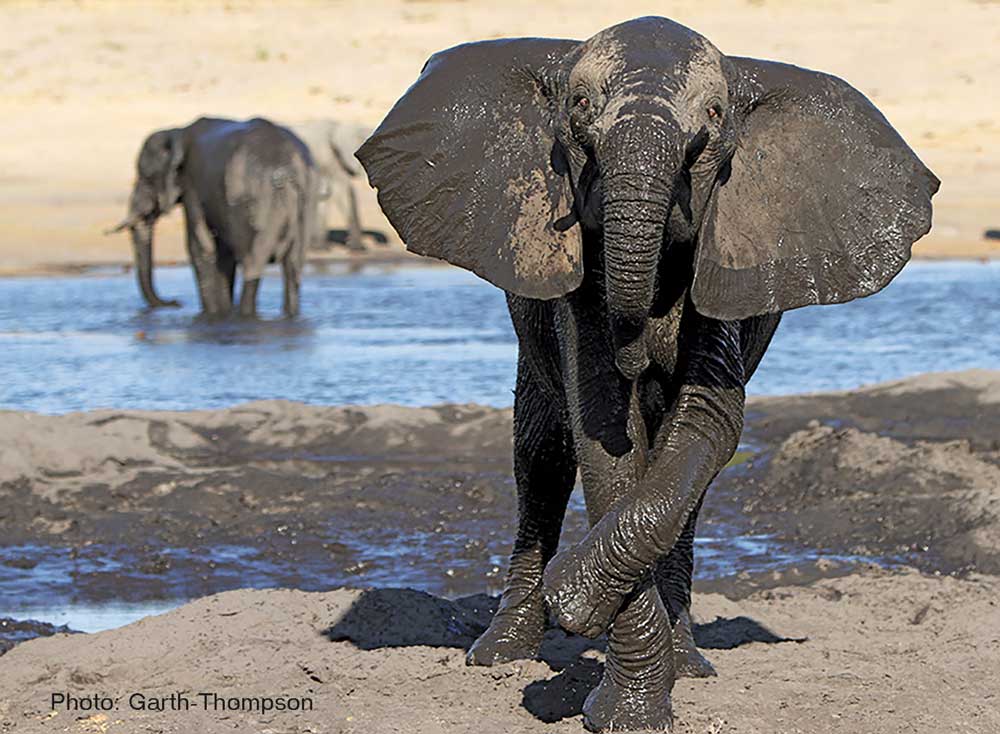
Foot swinging (showing apprehension)
Raising and holding or tentatively swinging the foreleg intermittently when unsure of what action to take. The swinging of the hindfoot may also be observed, although this is less common than the forefoot.
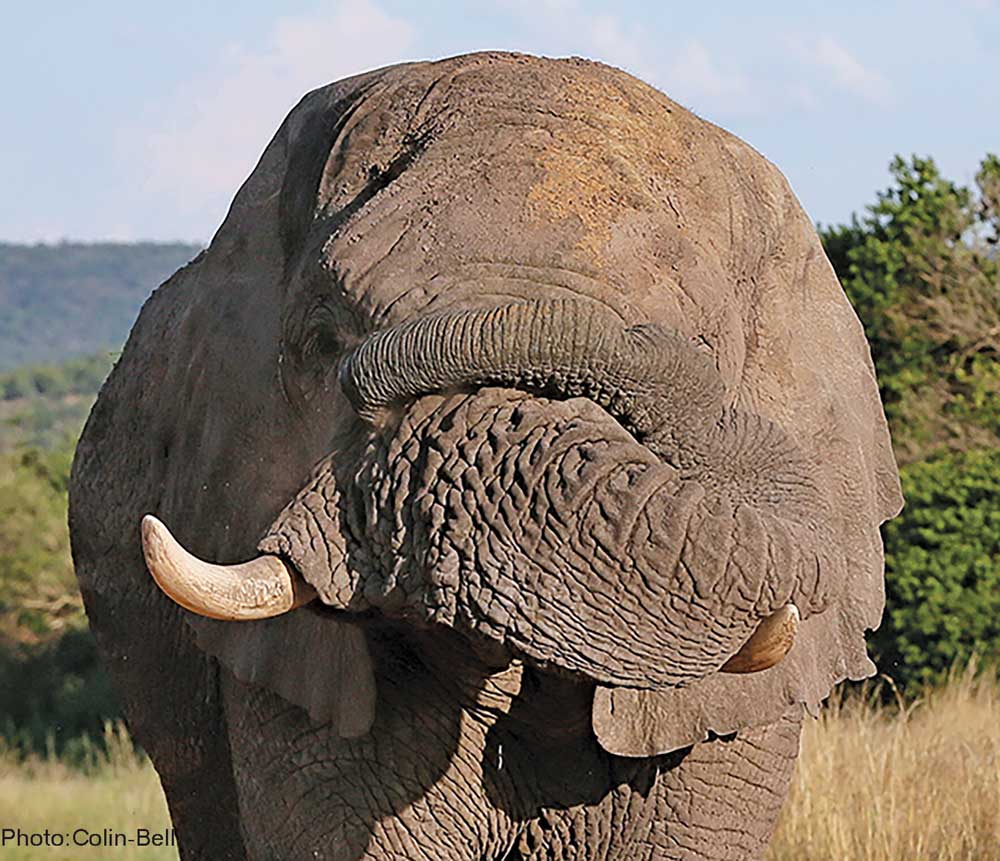
Touch-face (showing apprehension)
Self-directed touching of the face, apparently for reassurance. Very often in context of interaction with another elephant, may also be seen in any situation where an elephant feels uneasy. Touch-face includes self-touching of mouth, face, ear, trunk, tusk or temporal gland.
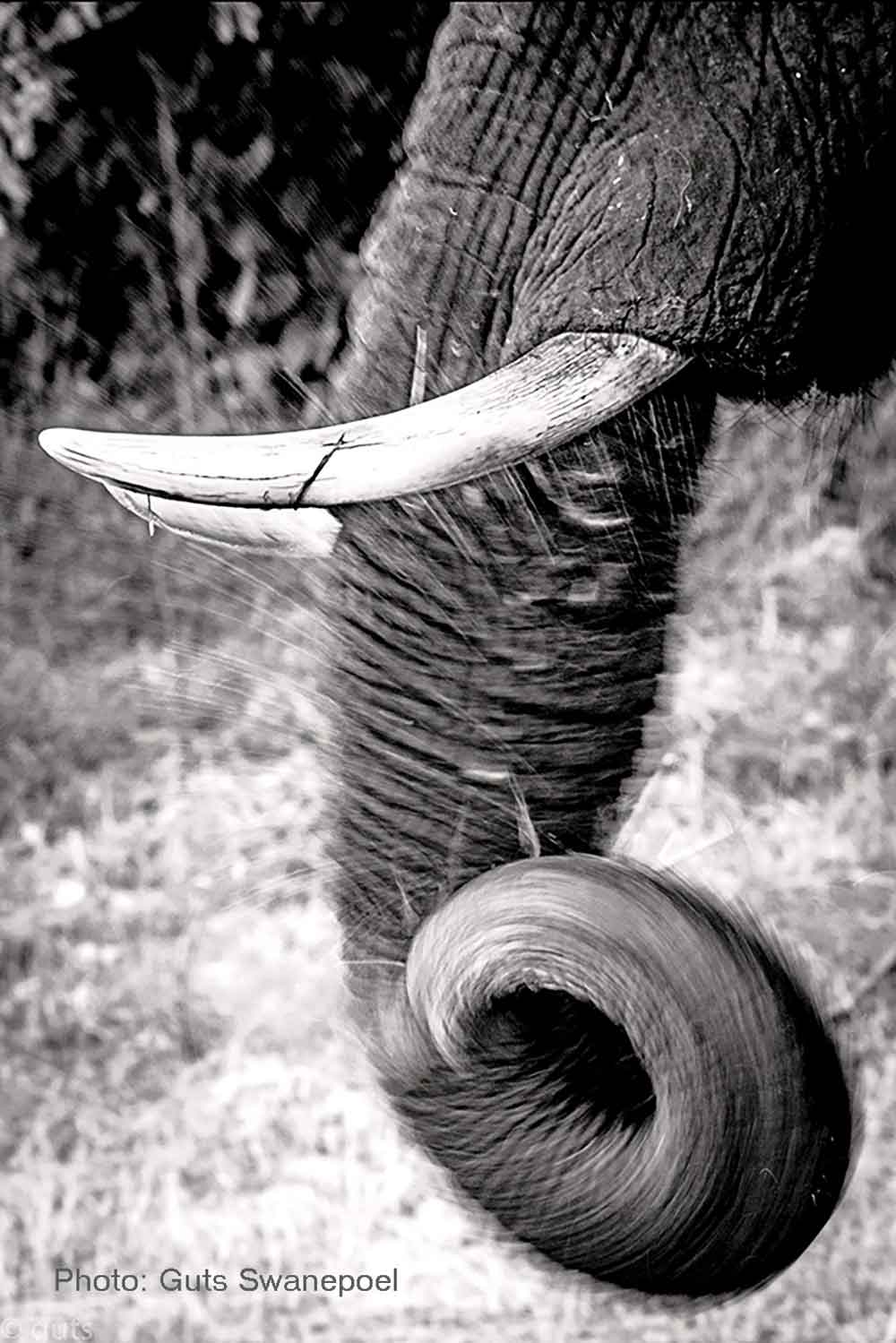
Trunk-twisting (showing apprehension)
Twisting the tip-off, the trunk back and forth in situations where an elephant is apprehensive or unsure of what action to take.
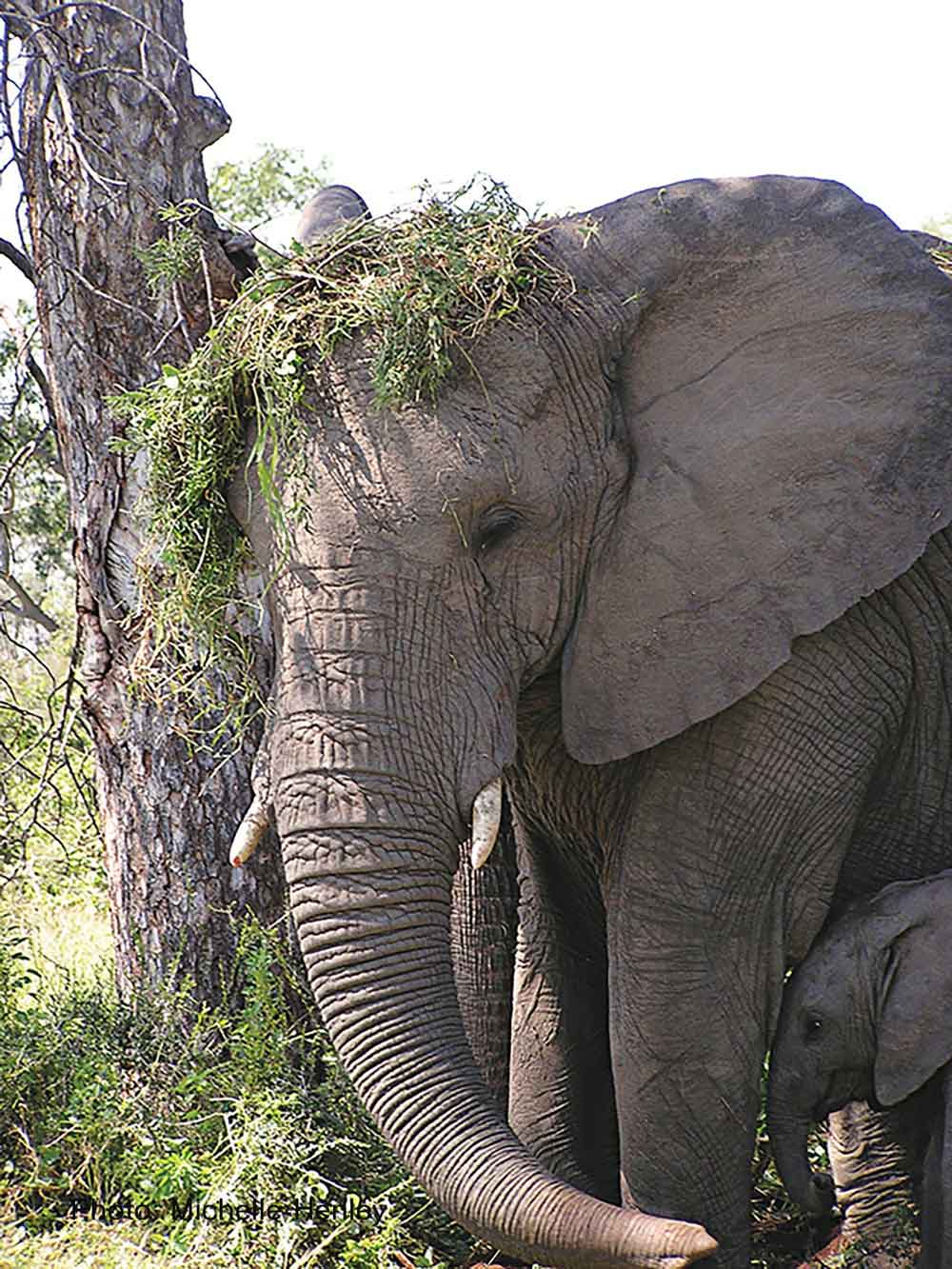
Bush-bash (threat behaviour)
Tossing the head and tusks back and forth through bushes or other vegetation, creating noise and commotion and demonstrating strength. It’s probably an expression of ‘look what I can do with you’, but it is also used to play.

Ear-spreading (Threat Behaviour)
Facing an opponent or predator head-on, with ears fully spread (at 90 degrees to the body), presumably for the purpose of appearing larger, is another threat display. Elephants may also spread their ears when they’re excited, surprised or alarmed.
This article by Audrey Delsink was curated from The Last Elephants-, a remarkable production, and a must-have for all wildlife lovers.



